This Is the Healthiest Type of Oat for You
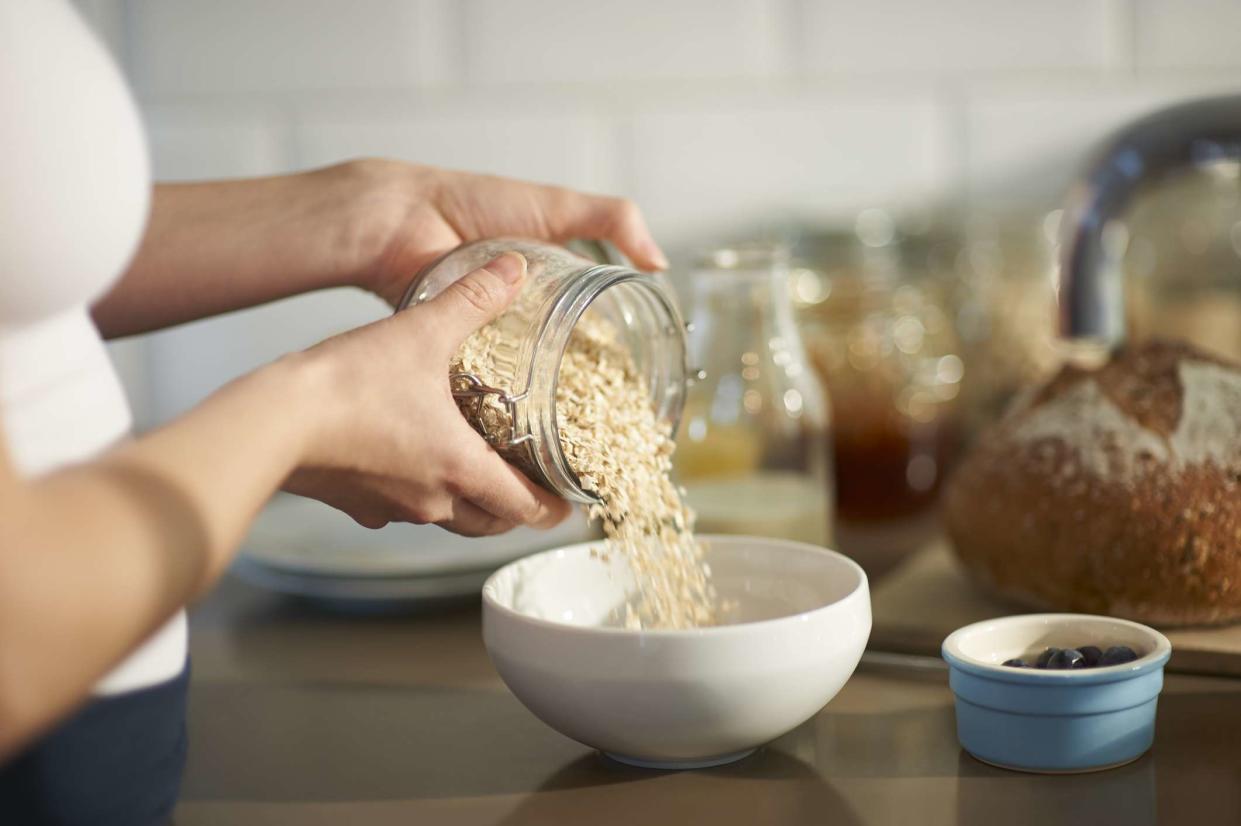
Dougal Waters / Getty Images
Medically reviewed by Karina Tolentino, RD
Oat (Avena sativa L.) is a cereal grain that produces edible seeds known as oats.
Eating oats can boost the nutrient density of your diet and protect your health in several ways. Studies show that eating oats may reduce heart disease risk by lowering LDL cholesterol, supporting the health of the digestive system, and boosting feelings of fullness after eating.
However, with so many types of oats to choose from, shopping for them can be a confusing process. While most oat products are nutritious, some are better for your health than others.
1. Oat Groats
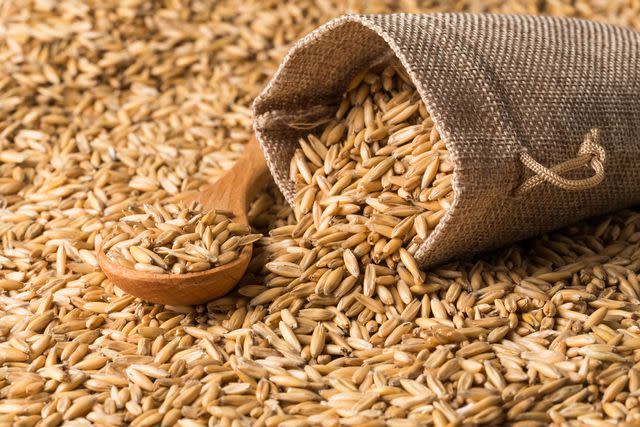
R.Tsubin / Getty Images
Oat groats, also known as whole oats, are oat kernels that have had their tough outer shells known as hulls removed. Oat groats are the least processed of all oat products and all oats, including steel-cut and rolled oats, begin as oat groats.
Oat groats are slightly higher in fiber and protein than steel-cut and rolled oats, though they contain similar amounts of vitamins and minerals.
Here's the nutrition breakdown of a 1/4 cup serving of dry oat groats:
Calories: 180
Carbs: 30 grams (g)
Fiber: 5 g
Protein: 6.99 g
Fat: 3 g
Iron: 1.8 milligrams (mg). or 10% of the Daily Value (DV)
Oat groats may be a better choice for blood sugar control than more processed oat products as they have a lower glycemic index (GI), which is a measure of a food's impact on blood sugar. The GI ranks foods on a scale of 0-100. Low-GI foods score less than 55, moderate GI foods score between 56-69, and high-GI foods score 70 or greater.
Studies show that intact oat products, such as oat groats, have a GI value of around 43.4, which is considered low.
Because oat groats have an intact grain structure, it's harder for your body to digest and absorb them, which lowers their impact on your blood sugar. They're also a good source of iron, a mineral needed for oxygen transportation, growth and development, cellular function, and the production of certain hormones.
Oat groats have a chewy texture and take about 30 minutes to prepare by boiling on the stovetop. Try swapping out your regular bowl of cereal for oat groats topped with nuts and berries for a nutritious and delicious way to start your day.
2. Oat Bran
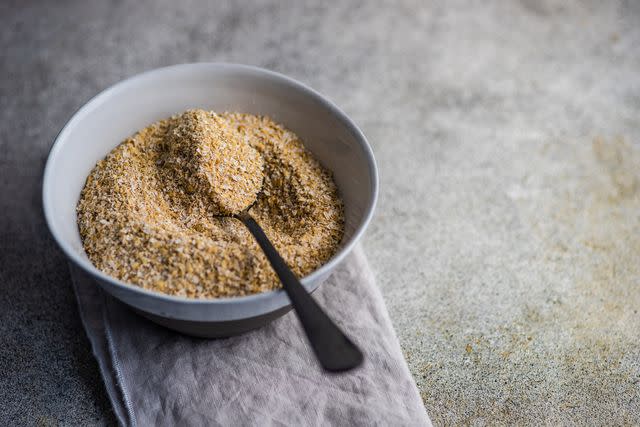
annabogush / Getty Images
Oat bran is made by grinding whole oat grains and separating the outer bran layer from the rest of the grain. Oat bran is high in fiber, containing at least 16% fiber by weight, and is also rich in β-glucan, a type of soluble fiber that lowers cholesterol by increasing cholesterol excretion through the stool and preventing its absorption in the digestive tract.
Findings from a 2022 review of 13 studies suggested that supplementation with oat β-glucan is effective for significantly lowering total and LDL cholesterol levels in people with high cholesterol.
A 1/4 cup serving of oat bran provides:
Calories: 57.7
Carbs: 15.5 g
Fiber: 3.6 g
Protein: 4 g
Fat: 4.1 g
Iron: 1.27 mg, or 7% of the Daily Value (DV)
Zinc: 1.46 mg, or 13% of the DV
Oat bran is lower in calories and carbs than other oat products, making it a good choice for those looking to reduce their carbohydrate intake. Since it's low in calories and a good source of fiber, it's popular amongst those looking to boost weight loss.
In addition to fiber, oat bran is a good source of zinc, which plays an important role in immune function and skin health.
Oat bran can be enjoyed as a hot cereal and can also be used to boost the fiber intake of home-baked products like bread, muffins, and crackers.
3. Steel Cut Oats
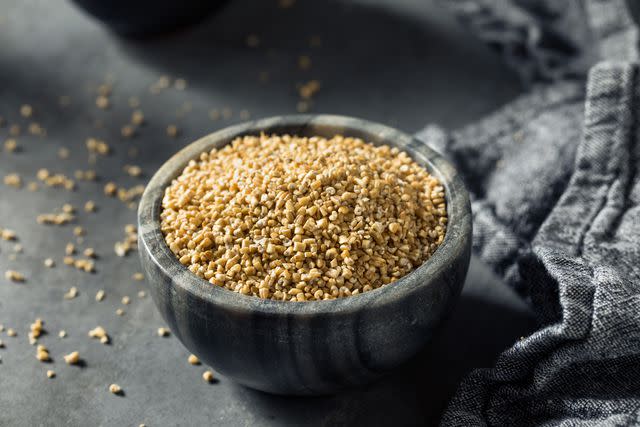
bhofack2 / Getty Images
After oat groats, steel-cut oats are the least processed type of oat product you can buy. Steel-cut oats are made by chopping oat groats into smaller pieces, which results in an oat product with a chewier texture and higher fiber content than rolled oats.
Here's the nutrition breakdown for a 1/4 cup serving of dry steel-cut oats:
Calories: 150
Carbs: 27 g
Fiber: 4 g
Protein: 5 g
Fat: 2.5 g
Iron: 1.75 mg, or 10% of the Daily Value (DV)
Like oat groats, steel-cut oats are a good source of iron. They also provide a good source of fiber and protein, though slightly lower in these nutrients than oat groats. Steel-cut oats have a GI of around 53, making them a good choice for maintaining healthy blood sugar regulation.
Steel-cut oats take longer to prepare than rolled oats, with an average cooking time of 20-30 minutes on the stovetop. Soaking steel-cut oats overnight can help cut back on cooking time and also help reduce antinutrients found in oats, like phytates, tannins, and oxalates, which interfere with the absorption of nutrients like zinc and iron.
4. Rolled Oats
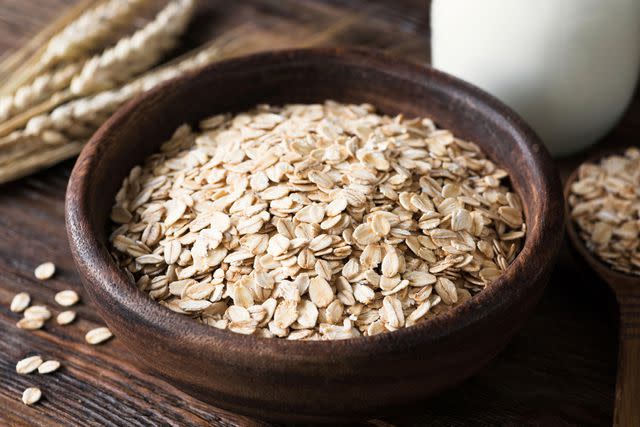
Arx0nt / Getty Images
Rolled oats, commonly known as "old fashioned" oats, are one of the most popular types of oat products. They're made by steaming and flattening oat groats, which improves the texture of the oats and decreases cooking time. Rolled oats have a soft texture and are much quicker to prepare than steel-cut oats or oat groats, with a cook time averaging around five minutes.
Though they're slightly lower in fiber and protein than oat groats and steel-cut oats, they're still a healthy choice.
A 1/4 cup serving of raw rolled oats contains:
Calories: 75
Carbs: 13.5 g
Fiber: 2 g
Protein: 2.5 g
Fat: 1.25 g
Iron: 0.8 mg, or 4% of the Daily Value (DV)
Because rolled oats are more processed than steel-cut oats or oat groats, they're easier to digest and have a higher glycemic index. Rolled oats have a GI of around 56, which is considered a moderate GI. To reduce the impact of rolled oats on your blood sugar, try eating oats alongside foods high in fiber and protein. Fiber and protein help slow digestion, which reduces the rate at which sugar is absorbed into the bloodstream.
For example, try making a savory breakfast bowl by topping rolled oats with protein-rich eggs and fiber-rich sautéed vegetables for a blood sugar-friendly breakfast idea.
5. Instant Oats
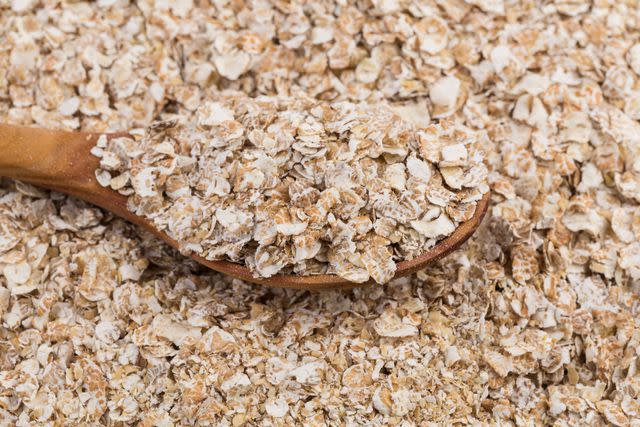
R.Tsubin / Getty Images
Instant oats are popular amongst those looking for a quick breakfast option that saves them time in the kitchen. Quick oats are rolled very thin and are sometimes pre-cooked, which cuts down on cooking time. Most instant oats take just a minute or two to prepare.
Instant oats can be found individually packaged in single servings and come in a variety of flavors such as cinnamon sugar, maple, and strawberries and cream.
Though instant oats provide important nutrients, flavored instant oats can be very high in added sugar, which can be problematic when consumed in large quantities.
Here's the nutrition breakdown for a single-serving package of Quaker Maple and Brown Sugar instant oatmeal:
Calories: 160
Carbs: 33 g
Added sugar: 12 g
Fiber: 3 g
Protein: 4 g
Fat: 2 g
Iron: 1.1 mg, or 6% of the Daily Value (DV)
Because they're lower in fiber and protein, instant oats have a more significant effect on blood sugar than steel-cut oats or oat groats. Many instant oat products are also high in added sugar, which can increase their effect on blood sugar levels.
Some instant oatmeal products can contain several teaspoons of added sugar per serving and can harm health if consumed regularly. Studies show that diets high in added sugar contribute to several health issues, from promoting weight gain to increasing the risk of heart disease.
If you want the convenience of instant oats without added sugar, try plain quick-cooking rolled oats. Quick-cooking rolled oats are rolled oats that have been rolled out to a thinner consistency than traditional rolled oats, which cuts back on cooking time. Quick cooking rolled oats usually take under five minutes to prepare, making them a convenient choice.
6. Oat Flour
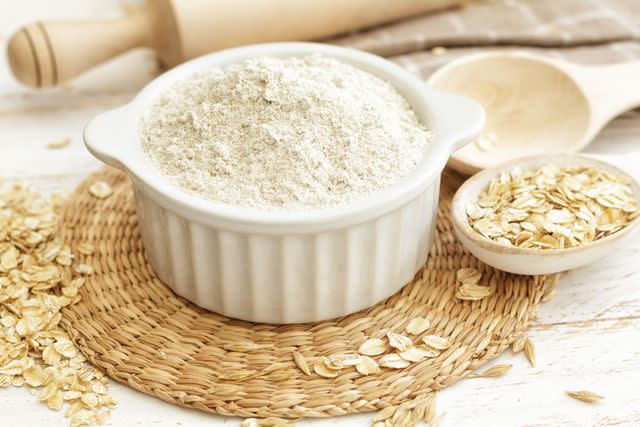
YelenaYemchuk / Getty Images
If you're looking for a way to add oats into your diet but aren't a fan of oatmeal or oat bran, consider trying oat flour.
Oat flour provides the same nutrients and beneficial compounds as oats, including β-glucan, which can help support healthy blood sugar regulation, reduce cholesterol levels, and promote digestive health by encouraging the growth of beneficial probiotic bacteria in the gastrointestinal tract.
A 1/4 cup serving of oat flour provides:
Calories: 120
Carbs: 22 g
Fiber: 3 g
Protein: 3.99 g
Fat: 2 g
Iron: 1.04 mg, or 6% of the DV
Zinc: 0.83 mg, or 8% of the DV
Oat flour is higher in protein and fiber than all-purpose flour and provides a decent amount of minerals such as zinc and iron. It also makes an excellent all-purpose flour substitute for people with celiac disease and non-celiac gluten intolerance, as it's naturally gluten-free.
Oat flour has a mild, slightly nutty flavor and is delicious in baked goods like cookies, breads, and muffins. Because it's lighter than all-purpose flour, you'll need to use slightly more when using it in place of all-purpose flour in recipes. It's often recommended to use 1¼ cups of unpacked oat flour for every one cup of unpacked all-purpose flour.
Tips for Consuming Oats
Oats are nutritious and versatile and can be used to create quick, filling dishes, including sweet and savory recipes.
Here are a few ways to enjoy oats:
Use oat groats, steel-cut oats, or rolled oats in place or rice, farro, or quinoa to create savory grain bowls
Top oat grouts, rolled oats, or steel-cut oats with fruit and nuts for a filling breakfast
Make overnight oats with rolled oats
Sprinkle oat bran into yogurt and smoothie bowls
Use rolled oats to make homemade granola, energy bars, and protein balls
Add oat groats to soups and stews
Use oat flour in place of regular flour in baked goods like muffins and breads
Add oat groats to salads
Fold rolled oats into cakes and cookies
Use oat bran in pancakes to boost their fiber content
There are many other ways to incorporate oat products, like oat groats, rolled oats, oat bran, and oat flour into your diet. Try keeping a variety of oat products in your pantry so you always have a healthy option on hand.
A Quick Review
Oats are a good source of several nutrients, including fiber, iron, and protein, and can be incorporated into both sweet and savory recipes. There are several types of oat products, some of which are more nutritious than others.
While oat groats, steel-cut oats, rolled oats, and oat bran make healthy choices, it's important to watch out for high levels of added sugar in flavored instant oat products.
For more Health.com news, make sure to sign up for our newsletter!
Read the original article on Health.com.

